
- Display 15 Products per page
-

Abusive Head Trauma (Shaken Baby Syndrome)
Fact Sheet, Revised 2019
Explains what abusive head trauma is, including how and why it happens, the long-term effects, and how it can be prevented. Aimed at health professionals and service providers who work with families. For information aimed at caregivers, see When Your Baby Can’t Stop Crying (resource 4-902).
SKU: 4-900 -
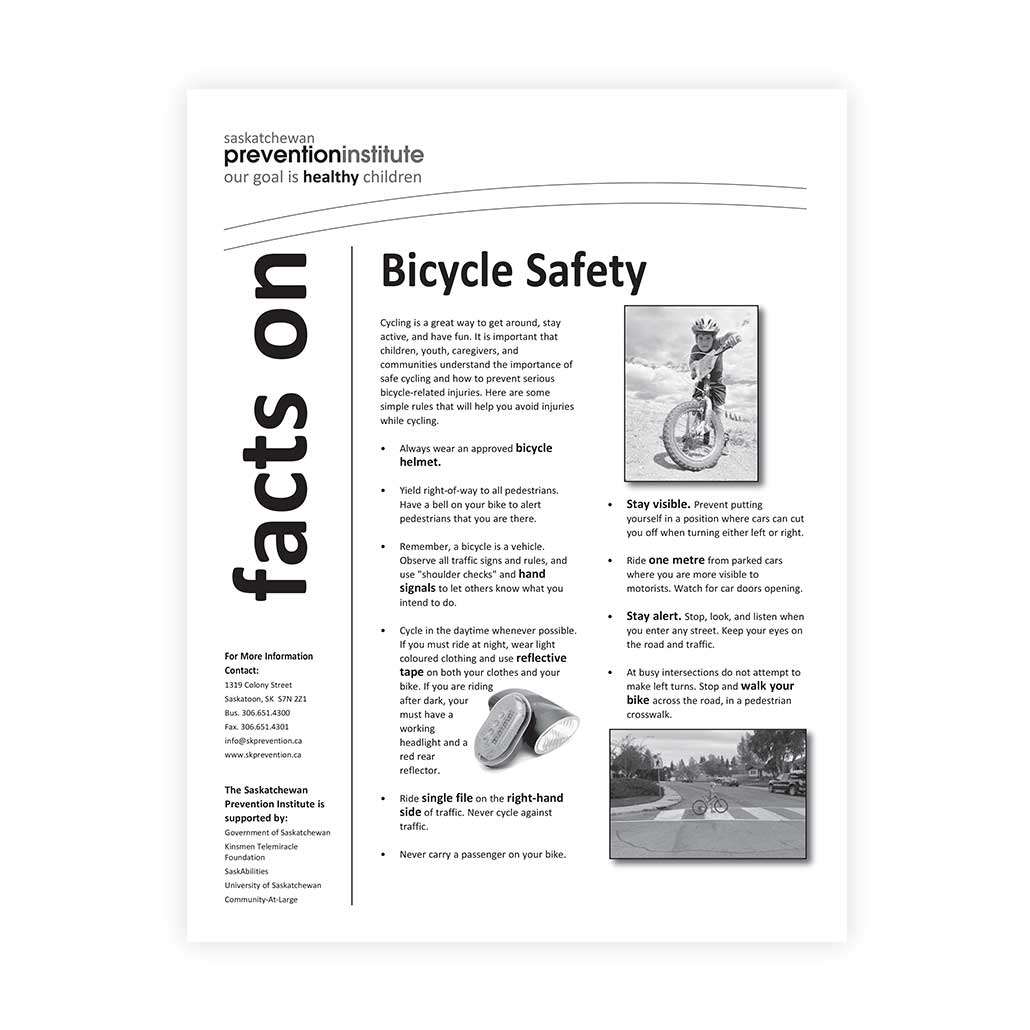
Bicycle Safety
Fact Sheet, Revised 2022
The best way to avoid injury while cycling is to follow safe practices. This fact sheet outlines some rules of the road and general tips to help you avoid injury while cycling. This resource is ideal for all cyclists.
SKU: 4-202 -
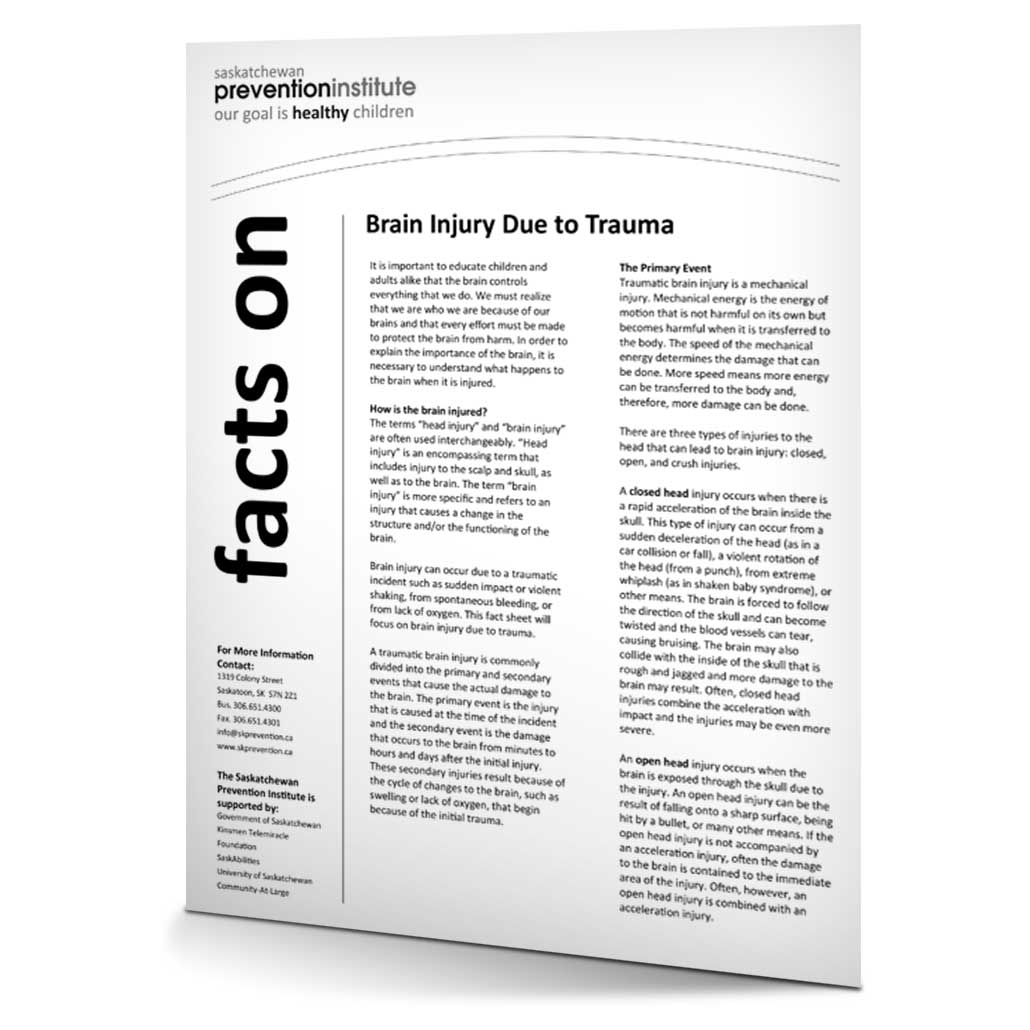
Brain Injury Due to Trauma
Fact Sheet, Revised 2019
Explains the different ways the brain can be injured, including closed, open, and crushing head injuries. Information about effects on the brain and how to prevent this type of injury is also shared.
SKU: 4-004 -

Button Battery Safety
Fact Sheet, Revised 2021
This fact sheet provides information about what button batteries are, how they can be harmful to the health of children, safety tips, and what to do if a child swallows a button battery.
SKU: 4-002 -

Child and Youth Injury in Saskatchewan 1995-1999
Report, 2002
This report focuses on the most significant causes of injury-related hospitalizations and deaths for Saskatchewan children and youth. The most significant causes discussed in this report are falls, motor vehicle traffic, self-injury, drowning and choking, fire and flame, poison, motor vehicle pedestrian, sports, and assaults.
SKU: 4-006 -
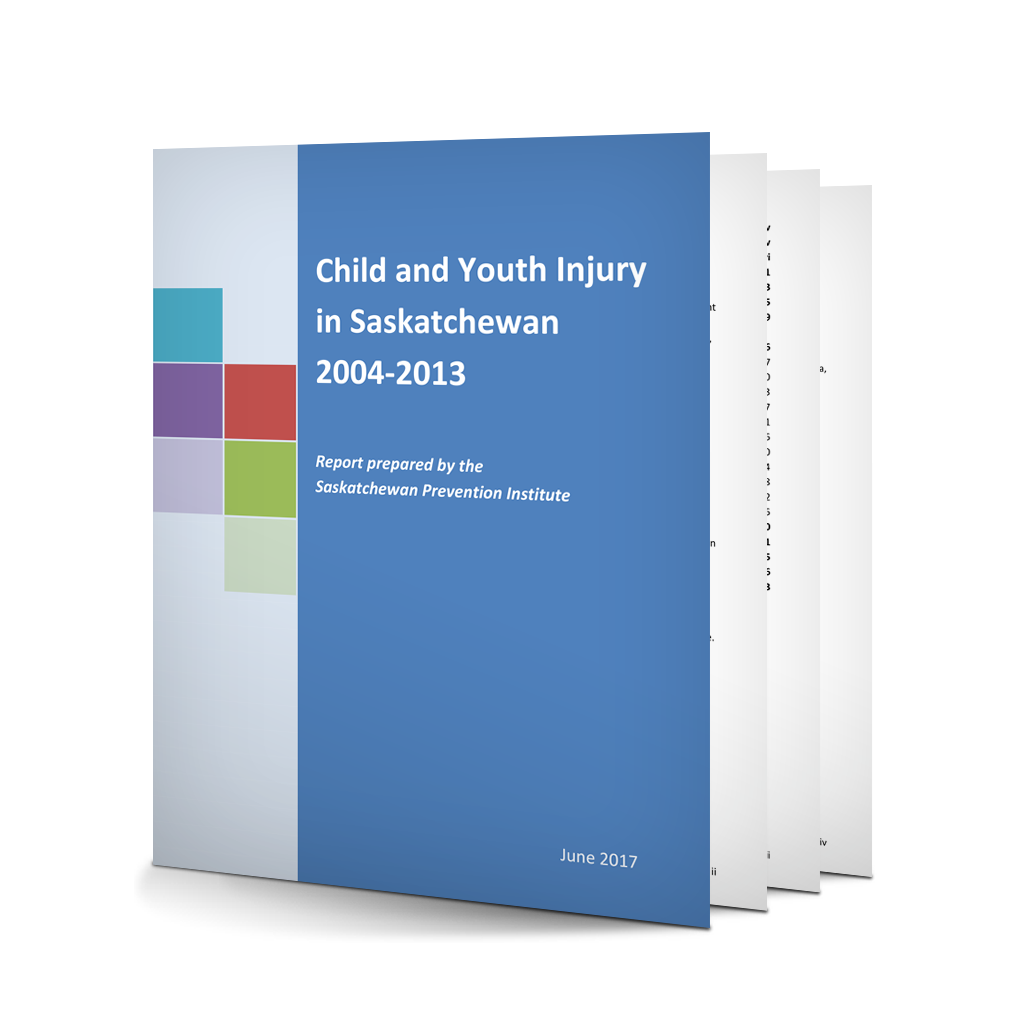
Child and Youth Injury in Saskatchewan 2004-2013
Report, 2017
Child and Youth Injury in Saskatchewan 2004-2013 serves as an update to the Child and Youth Injury in Saskatchewan 1995-1999 report completed by the Saskatchewan Prevention Institute in 2002. The current report examines injury-related deaths and hospitalizations of Saskatchewan children and youth less than 20 years of age during the 10 year period of 2004 to 2013. Injury-related deaths and hospitalizations are examined overall, followed by a more detailed analysis of the ten most common causes of injury-related hospitalizations, including both intentional and unintentional injuries. The ten most common causes discussed in this report are falls, sports, intentional self-harm, assault, poisoning, motor vehicle occupant, cycling, all-terrain vehicle, and fire and burns.
SKU: 4-007 -
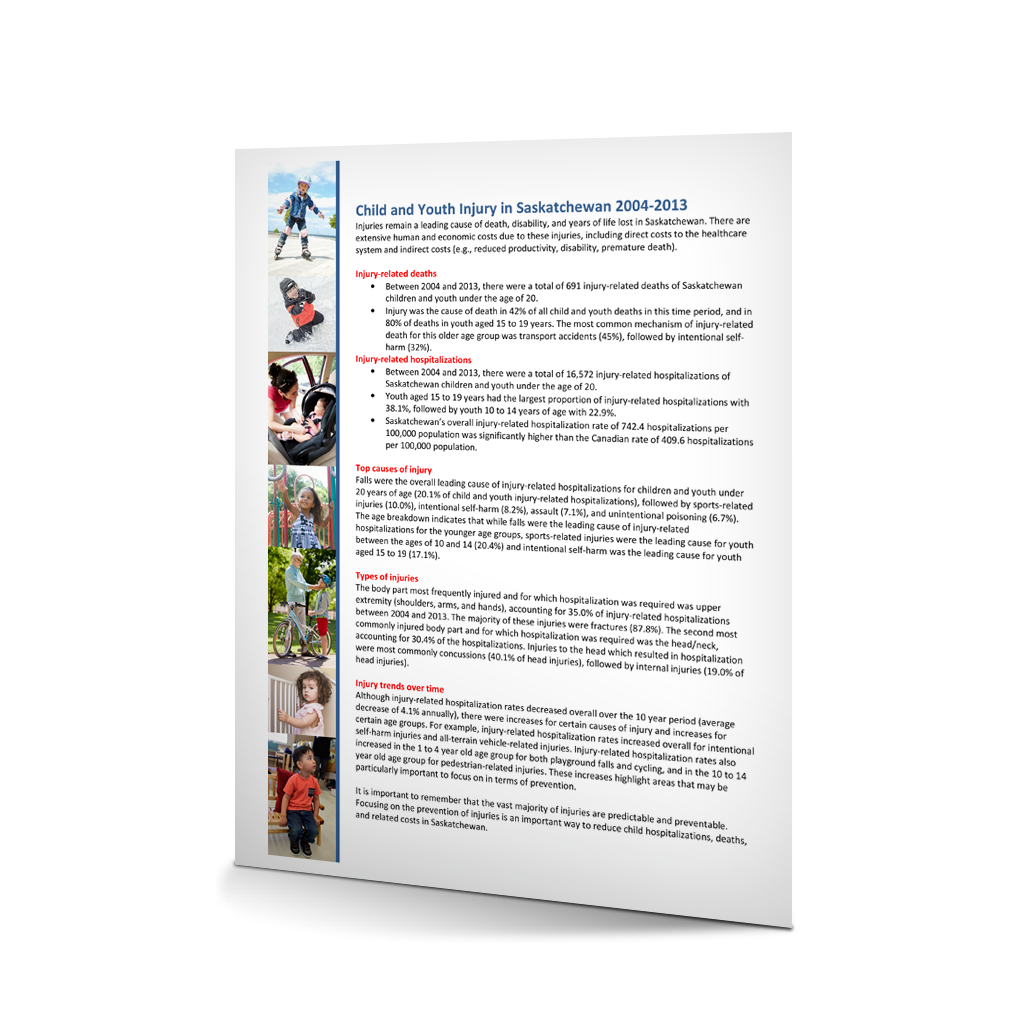
Child and Youth Injury in Saskatchewan 2004-2013 Summary
Report, 2017
This summary is based on the report, “Child and Youth Injury in Saskatchewan 2004-2013” (resource 4-007). It provides information about injury-related deaths and hospitalizations of Saskatchewan children and youth, including the top causes of injury-related hospitalizations and types of injuries.
SKU: 4-009 -

Child Death Review in Canada: A National Scan
Report, 2016
This report provides information about current child death review processes that exist in each of the provinces and territories in Canada, based on interviews with key informants in each region. Particular attention is paid to those provinces with a coordinated, multi-disciplinary, provincial child death review process. Recommendations and advice for others initiating a child death review process are also included.
SKU: 2-460 -

Child Injury Prevention Demonstration Activities
Guide, 2020
This activity guide was developed for community leaders, educators, and other professionals to use in their work with families to help prevent child injury. The ten hands-on activities included in this guide demonstrate the risk to children and youth from common causes of injury. The causes of injury addressed in the guide include burns, choking, poisoning, scalds, traumatic brain injury, cycling-related injury, drowning, and motor-vehicle injury. Each activity includes a list of the materials, the process, discussion points, and safety tips. Additional materials such as fact sheets, images, and videos are also listed for each activity.
SKU: 4-010 -

Child Injury Prevention Programming and Action Guide
Guide and Manual, 2017
The Child Injury Prevention Programming and Action Guide provides information about the importance of injury prevention, why children are more at risk of injury, and how to develop and implement an injury prevention strategy. This resource was developed for community-based programs to use in their work with families to prevent child injury, but it will be of interest to anyone who works with caregivers and children. Adapted with permission from Parachute Canada’s Introduction to Child Injury Prevention (ICIP) online resource.
SKU: 4-008 -
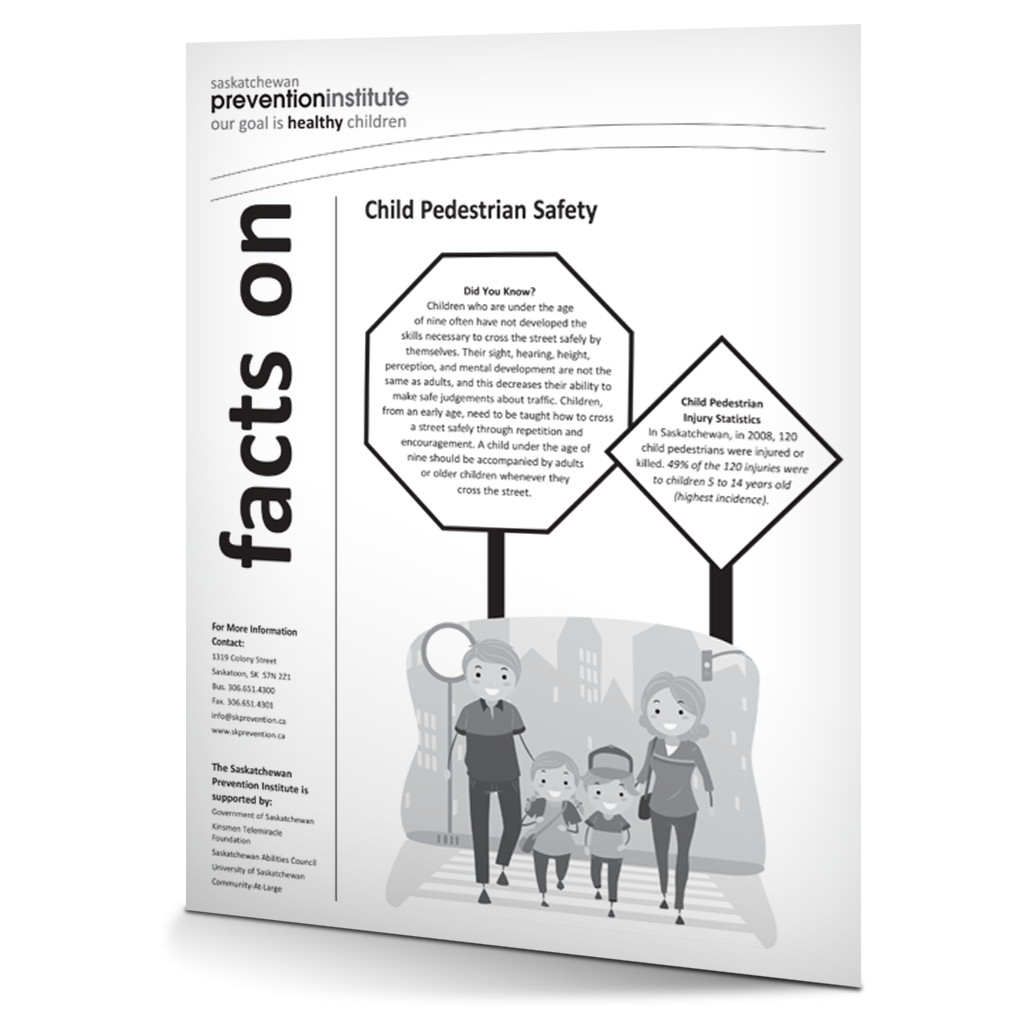
Child Pedestrian Safety
Fact Sheet, Revised 2015
This fact sheet provides tips and facts on child pedestrian safety.
SKU: 4-021 -
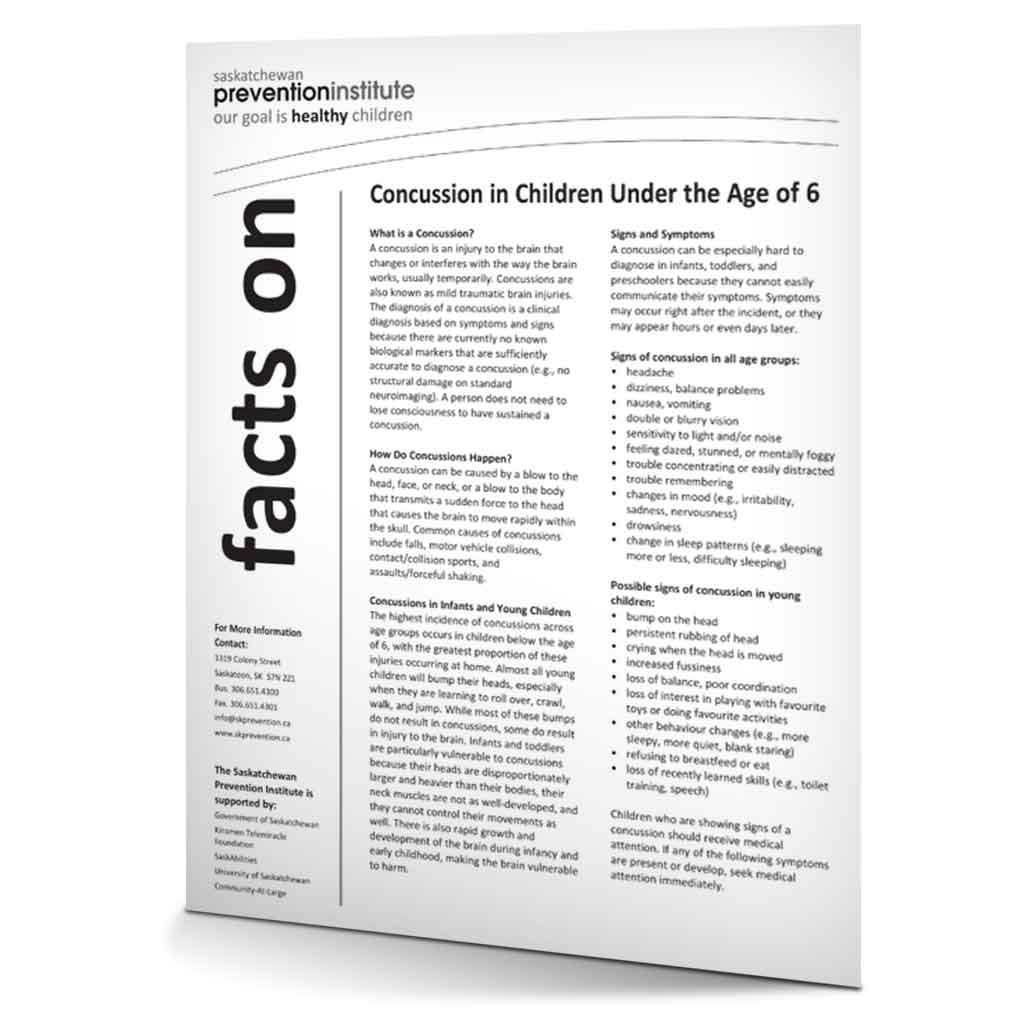
Concussion in Children Under the Age of 6
Fact Sheet, 2019
Although the majority of concussions are minor, they can have serious outcomes for children under the age of six. This fact sheet defines what a concussion is, how concussions happen, and the signs and symptoms of a concussion. Information on treatment, potential long-term outcomes, and prevention is also provided. Aimed at health professionals and service providers who work with families.
SKU: 4-001 -
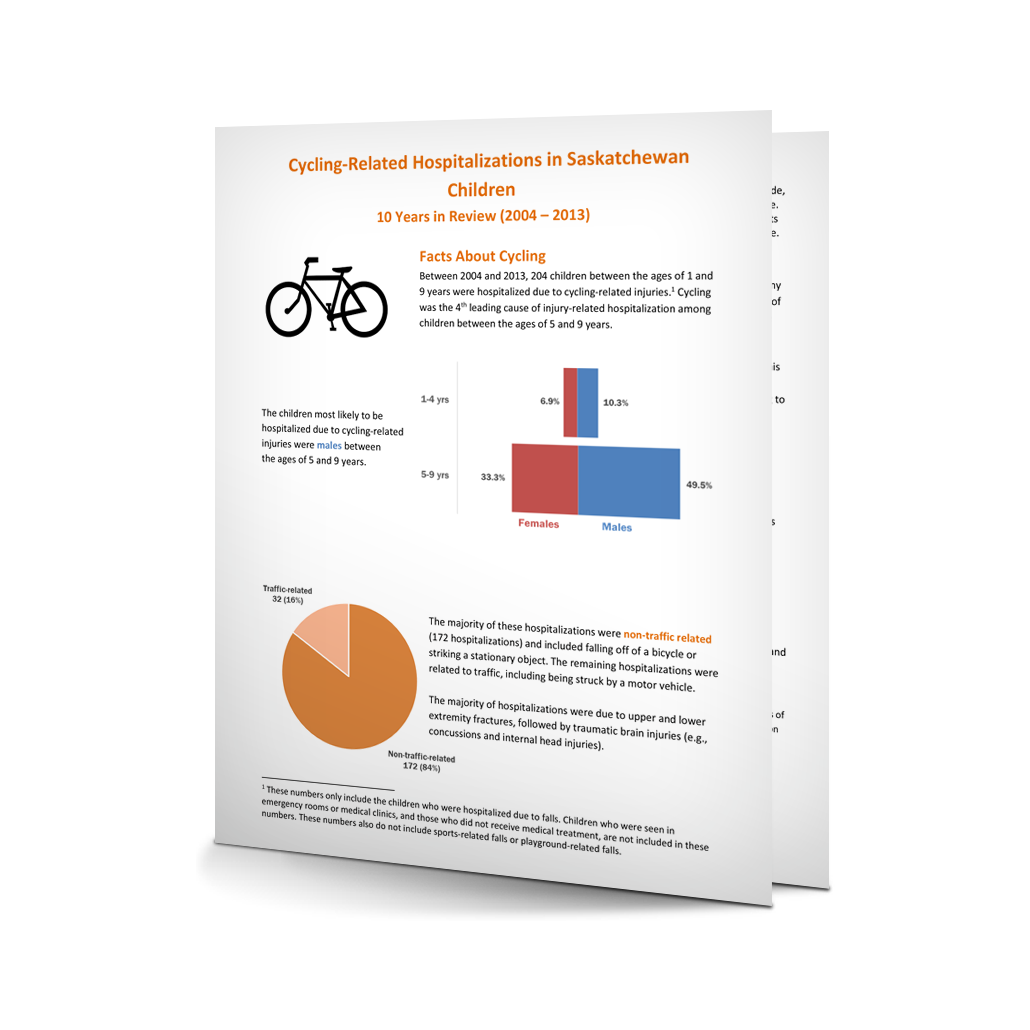
Cycling-Related Hospitalizations Summary
Fact Sheet, 2018
This summary provides information about cycling-related injury hospitalizations for Saskatchewan children under the age of 10, between 2004 and 2013. Information about how to prevent cycling-related injuries in children is also provided.
SKU: 4-404 -
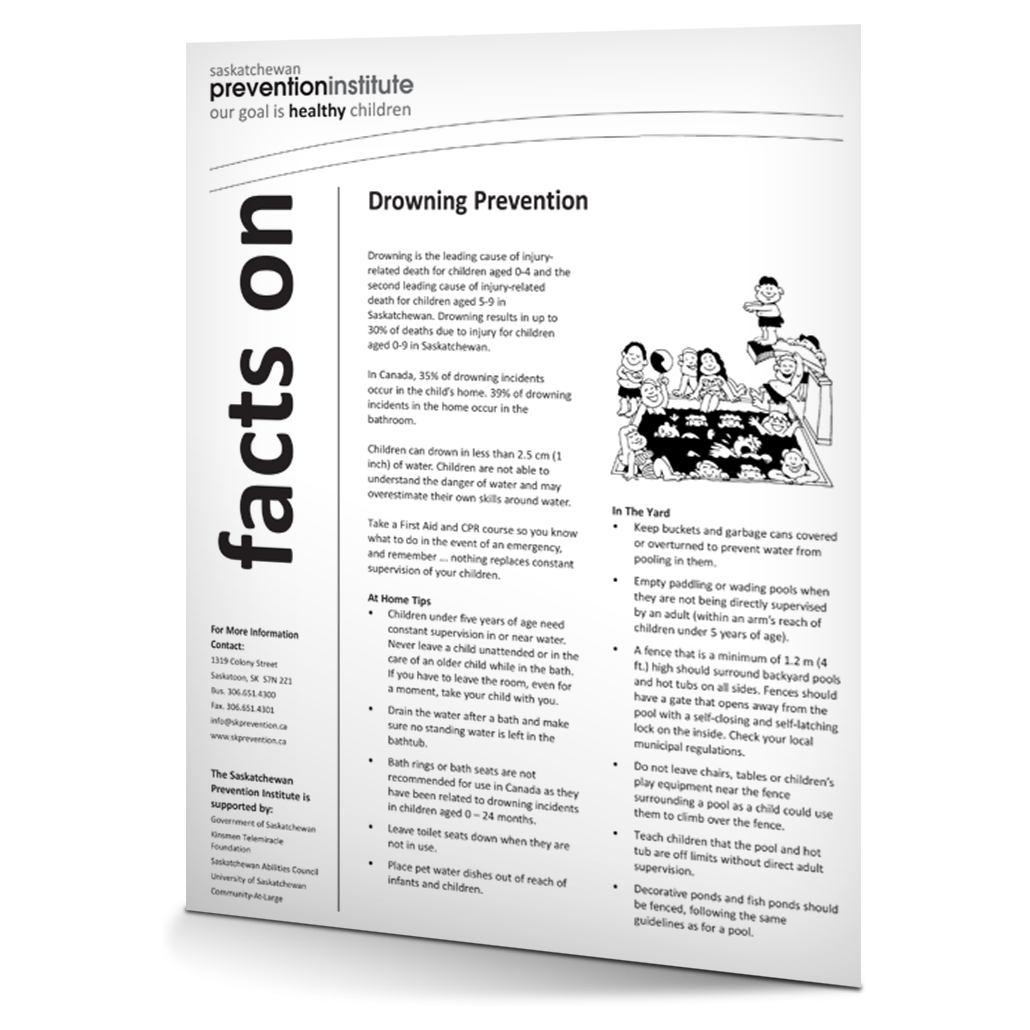
Drowning Prevention
Fact Sheet, 2010
Drowning can happen swiftly and silently. In Saskatchewan, drowning is the leading cause of death due to injury among children birth to four years of age and is the second leading cause of death due to injury among children five to nine years of age. The fact sheet outlines ways to assist you in protecting your family from drowning. Ideal for families and professionals working in the area of child safety.
SKU: 4-500 -

Electronic Cigarettes (e-cigarettes) and Risks to Children
Fact Sheet, Revised 2017
This fact sheet defines what electronic cigarette devices are and how they can be harmful to the health of children and youth. This resource outlines tips for parents to avoid injury or accidental poisoning from electronic cigarettes.
SKU: 4-301
